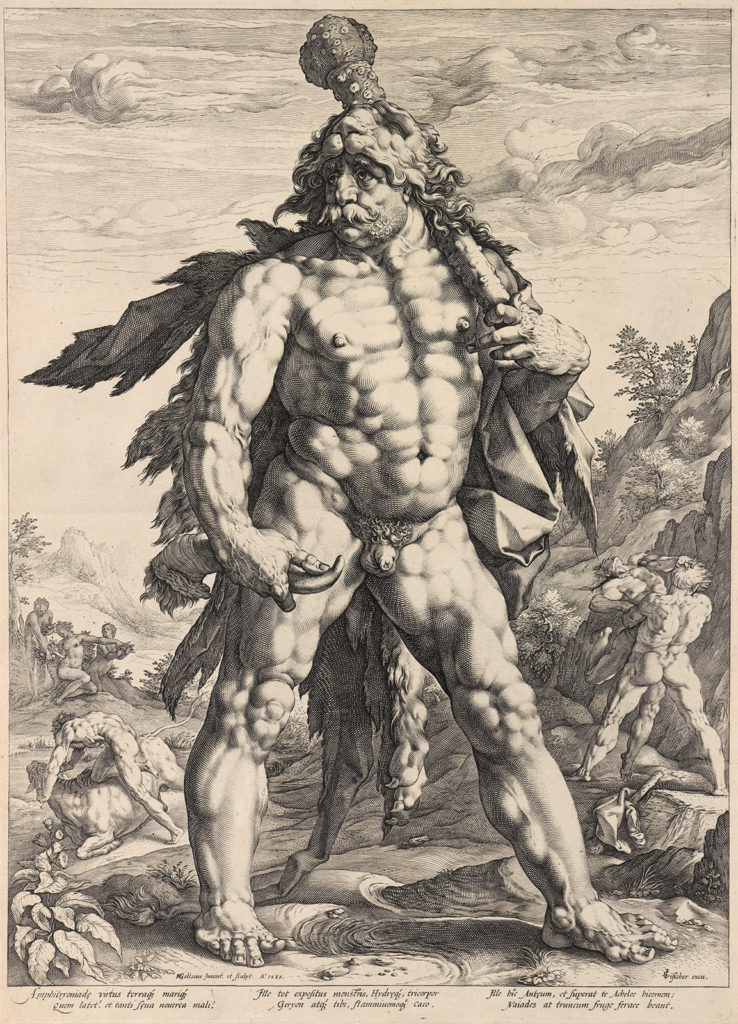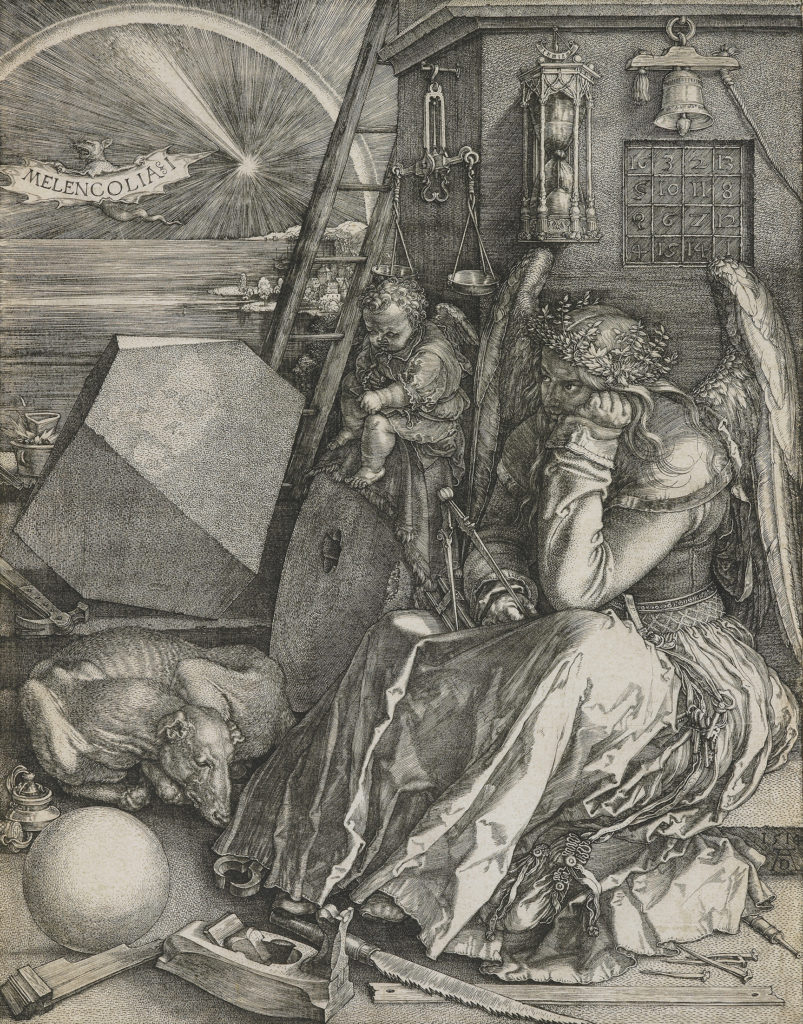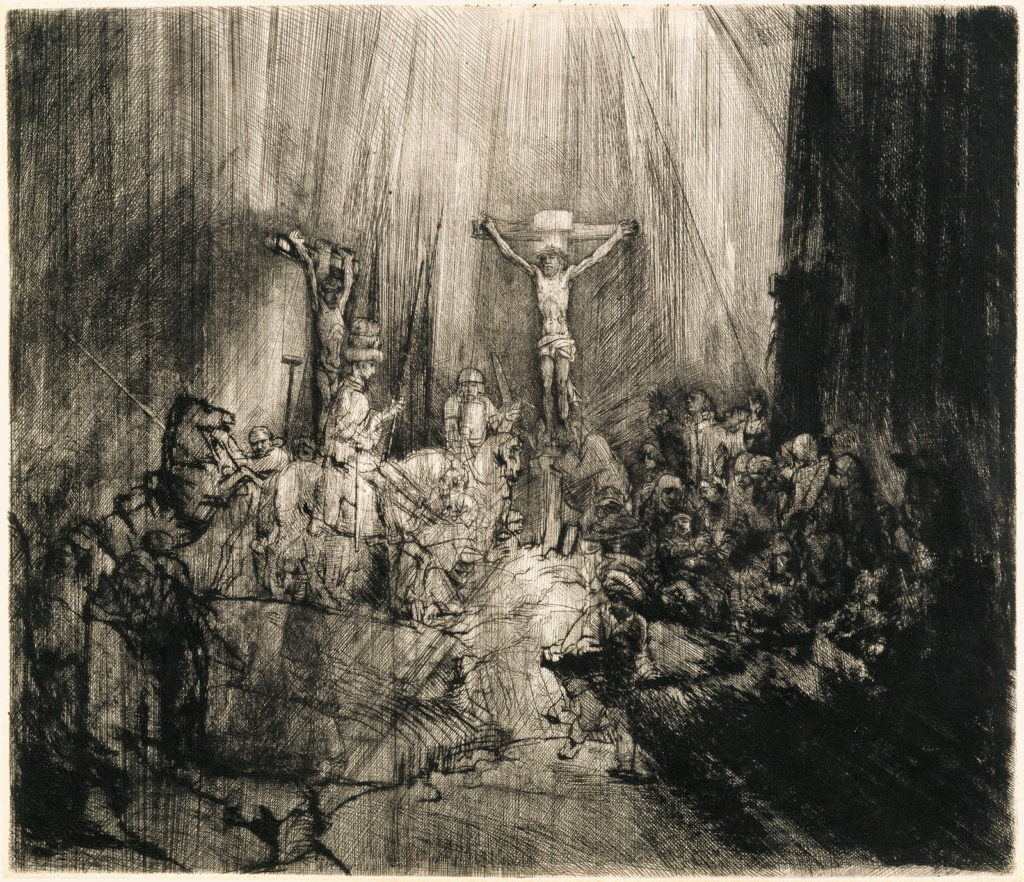
The hero stands tall, muscles tensed, lion-skin cloak floating with the breeze. In “The Great Hercules” (1589), Dutch artist Hendrick Goltzius (1558–1617) offers a monumental vision of confident power and a sly allegory for the Netherlands’ struggle against Spanish rule. And though his own right hand was crippled by childhood accident, the image’s formidable size and assured anatomy also showcase Goltzius’ mighty skills as both draftsman and engraver.
This fall, the Mildred Lane Kemper Art Museum at Washington University in St. Louis will present “The Great Hercules” as part of “Renaissance and Baroque Prints: Investigating the Collection.” Intended as a catalyst for new research and scholarship, the exhibition will feature more than 100 rarely seen works from the museums substantial holdings of 15th– to 18th-century prints. Along with public lectures, gallery talks and other events, “Renaissance and Baroque Prints” will provide visitors, students, faculty and outside scholars with a unique opportunity to examine and assess important examples by Albrecht Dürer (1471–1528), Rembrandt van Rijn (1606–1669), Giovanni Battista Piranesi (1720–1778) and other innovators of the medium.
Among the earliest works on view are “The Madonna and Child in the Courtyard” (c. 1474–79) by Martin Schongauer (c. 1430–1491) and “The Peasant Feast” (c. 1533–36) by Daniel Hopfer (c. 1470–1536). A skilled engraver, Schongauer is often credited with developing the technique of cross-hatching; the young Michelangelo is said to have copied his work. Hopfer was the first artist to adapt metal etching, long used to decorate armor, to printmaking, as well as the first publisher to demonstrate the new medium’s economic viability.

But it was Dürer, a goldsmith’s son, who truly established printmaking as an independent art form — and, in so doing, helped to elevate the status of the artist from practical craftsman to cultured intellectual. In “Melencolia I” (1514), Dürer depicts a figure with head in hand, eyes impatiently skyward, awaiting inspiration. Beside her, a winged child perches on a grindstone, busily inscribing a tablet. Creativity, Dürer seems to argue, requires knowledge and reflection while craft prioritizes physical labor.
For many artists, printmaking provided a lucrative means of disseminating and publicizing their works. Nicholas Beatrizet’s depictions of Roman landmarks were among the works collected into the “Speculum Romanae Magnificentiae,” which was sold to 16th century tourists. The engraver Marcantonio Raimondi (1480–1530) worked directly with Raphael to reproduce many of the latter’s compositions, including his iconic “Judgement of Paris” (c. 1517–20).
Rembrandt — like Dürer, whose work he collected — rarely translated canvases into prints, yet his restless technique and continuous reworking of earlier plates helped pioneer a looser, more painterly aesthetic. In “The Three Crosses” (1653–1660/61), the crucified Christ rises above the hill of Golgotha, body glowing softly, Roman soldiers and distraught followers crowding at his feet. Seen here in a dramatic late state, the image is at once mournful and majestic — and exemplifies the artist’s experimental approach to printmaking. With its fine slashing lines and dark, inky shadows, “The Three Crosses” suggest a torrential downpour dispelled by the warm, healing light of the sun.

Organizers and support
“Renaissance and Baroque Prints: Investigating the Collection” is curated by Allison Unruh, associate curator. Support is provided by the William T. Kemper Foundation and members of the Mildred Lane Kemper Art Museum.
Mildred Lane Kemper Art Museum
“Renaissance and Baroque Prints: Investigating the Collection” opens at the Kemper Art Museum with a free public reception from 7-9 p.m. Friday, Sept. 8, and remains on view through Jan. 8, 2018. Related events will include the concert “Art Inspiring Music: Italian Renaissance” (Oct. 23) as well as talks by scholars Elizabeth Wyckoff (Sept. 28 and Nov. 15), Michael Roth (Nov. 8) and William Wallace (Dec. 4).
The museum is located on Washington University’s Danforth Campus, near the intersection of Skinker and Forsyth boulevards. Regular hours are 11 a.m.-5 p.m. daily except Tuesdays and university holidays.
For more information, call 314-935-4523; visit kemperartmuseum.wustl.edu; or follow the museum on Facebook, Twitter and Instagram.